Scottish Fold Cat
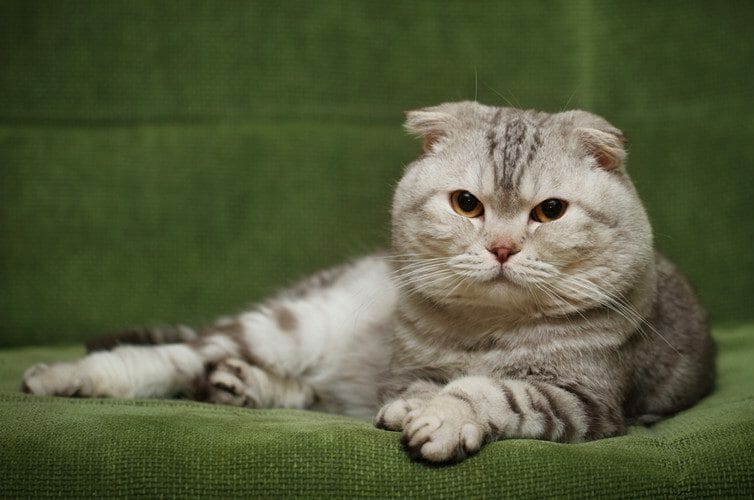
What Is a Scottish Fold Cat?
The Scottish Fold cat is a feline breed famed for its folded ears, which bend toward the front of its head, giving it an owl-like appearance. Once known as “lop -eared” or “lop,” the breed was given its current name in 1966. In certain registries, longhaired Scottish Folds are known by a few names including:
- Scottish Fold Longhair
- Longhair Fold
- Highland Fold
- Coupari
The popularity of Scottish Fold cats has risen in recent years. This is due, in part, to their rare and distinctive physical appearance, as well as being kept as pets by celebrities such as Taylor Swift and Ed Sheeran.
Concerns have been raised about the breed by a number of veterinarians. These worries relate to health issues caused by the dominant gene mutation that gave rise to the Scottish Fold’s distinctive appearance. Any new Scottish Fold owner must understand the health conditions associated with the breed and ensure adequate pet insurance is taken out to give the cat the care it may later need.
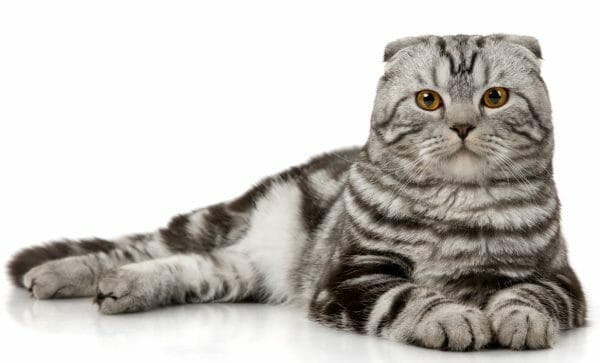
History of Scottish Fold Cats
All Scottish Fold cats trace their lineage to a white barn cat from a farm in Perthshire, Scotland named Susie. This feline with folded ears was found in 1961. Her ears caused her to look like an owl. Later, Susie had kittens—two of which had the same folded ears.
A neighboring farmer named William Ross acquired one of these cats and registered the new breed with the Governing Council of the Cat Fancy (GCCF) in 1966. He then started breeding Scottish Fold kittens with the assistance of Pat Turner, a geneticist. Over three years, the breeding program produced a total of 76 kittens—42 of which had folded ears. As a result, Ross and Turner concluded that the folded ears were the result of a dominant gene. Susie’s only offspring that reproduced was Snooks.
In the 1970s, the GCCF stopped further registrations of Scottish Folds due to concerns over health problems associated with the cat’s ears. After this, the popularity of the breed dropped in the United Kingdom.
However, soon after, the breed started becoming popular in the United States after some of Susie’s descendants were sent to Massachusetts where they were studied in a research center. Before it was completed, the research was stopped, and the cats were rehomed. Salle Wolfe Peters from Pennsylvania took in one of these cats and further developed the breed—helping to raise its popularity throughout the United States.
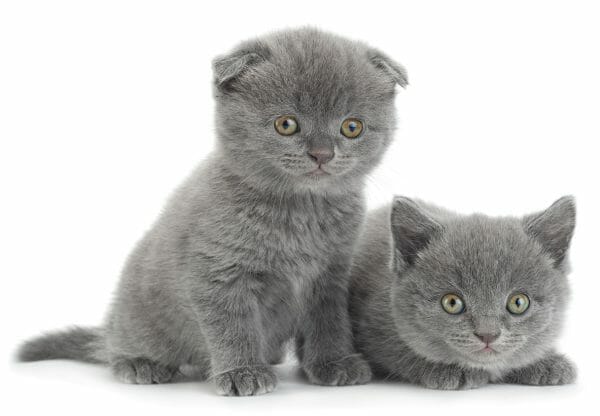
What Does a Scottish Fold Cat Look Like?
Looking like a cross between an owl and a pussycat, these stocky felines have folded ears that make them instantly recognizable. Their round head, short neck, and large eyes add to the owl-like look. Eye colors can be blue, green, or gold.
Scottish Fold cat colors include:
- White
- Cream
- Blue
- Silver
- Cameo
- Black
- Brown

A Scottish Fold’s fur can either be long or short. Coat patterns include:
- Solid
- Bicolor
- Tabby
- Spotted
- Tortoiseshell
- Shaded
A female Scottish Fold will typically weigh between 8 and 12 pounds. Males weigh around 12 pounds.
The dense coat of the Scottish Fold is easy to groom. These felines will generally only need brushing once a week. Regular nail trimming and ear cleaning are also recommended.
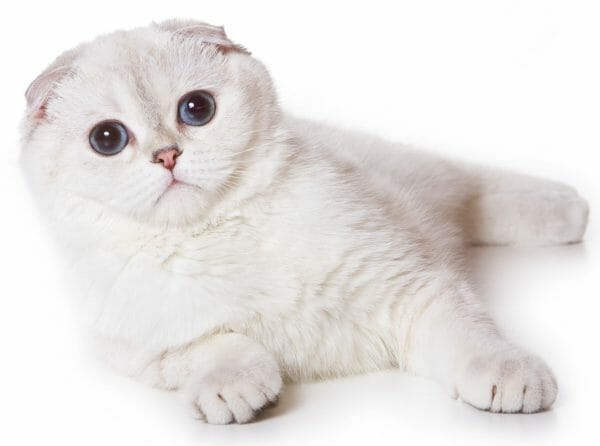
Scottish Fold Cat Personality
The easygoing Scottish Fold is affectionate and loves its family. That said, they are usually reserved and will not demand attention. Often, these cats will enjoy curling up beside their owners to nap.
Intelligent and quick to learn, it is possible to teach these cats some basic tricks. However, learning will always take place on their terms.
As a relaxed member of the household, the Scottish Fold is happy to share its space with other cats or dogs. When introducing new pets to the home alongside existing residents, always proceed with caution.
Although they have folded ears, Scottish Folds still use them to express how they feel and to communicate with those around them.
Scottish Fold Cat Health Issues
The average lifespan of a Scottish Fold cat is between 11 and 14 years. Regular check-ups with a vet are important to maintain good health, along with recommended vaccines such as those for distemper and rabies. Preventive medication for heartworm, ticks, and fleas is also recommended.
A defect in cartilage production caused by a dominant gene is the reason these felines have folded ears. The fold usually becomes evident at around three weeks of age. However, some kittens may not develop the fold at all. Although the feature is desirable from an aesthetic standpoint, the joint disease that causes these folds (osteochondrodysplasia) is degenerative and can cause bone and cartilage development issues throughout the body, along with chronic pain.
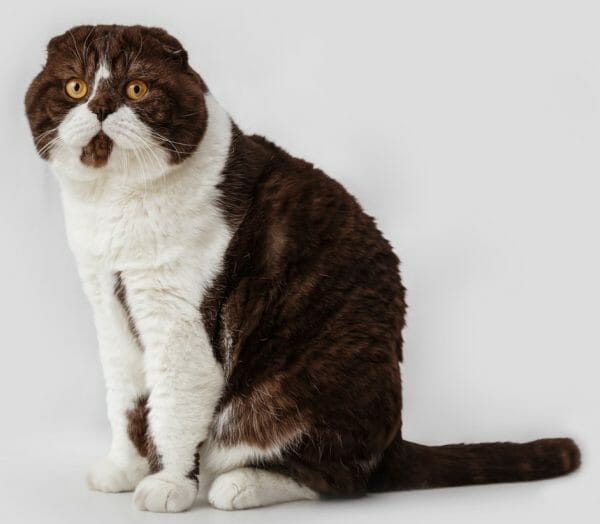
Osteochondrodysplasia can result in
- Fused tails
- Fused ankles
- Short and misshapen limbs
- Lameness
Another form of the condition (called achondroplasia) may be less severe and is more likely to be found in the Scottish Fold munchkin cat.
Although it is not possible to treat osteochondrodysplasia, the symptoms of joint pain can be managed with nonsteroidal anti-inflammatory drugs and supplements such as glucosamine. Through regular veterinary assessment (along with X-rays), it will be possible to identify and manage this condition if it presents.
For the Scottish Fold cat, arthritis is almost inevitable. Changes in the cat’s activity levels, posture, and gait may all indicate the onset of this condition. Owners should also keep an eye out for changes in the shape of the cat’s limbs.
Scottish Folds are also genetically predisposed to Hypertrophic Cardiomyopathy (HCM). This condition causes a thickening of the walls in the heart. As the walls start to thicken, it becomes harder for the heart to pump oxygenated blood to the other vital organs leading to additional health problems.
There is no cure for this condition. However, medication can be used to stabilize HCM so that the risks associated with congestive heart failure, thromboembolism, and hypothermia are reduced. The prognosis for HCM is variable.
Scottish Fold Cats for Adoption
Before searching for a Scottish Fold cat for sale, always check local animal rescue centers. If possible, adopt a Scottish Fold cat from a no-kill shelter as this type of rescue center will never put a healthy animal down.



